Almost every athlete knows the moment when the grip strength fails or the skin hurts and threatens to burst open. Especially those of you who do deadlifts twice a week or pull-ups regularly during self-weight training are likely to be affected. What hands without fitness gloves, chalk and Co. threatens, if a complete back training with Kreuzheben, pull-ups and other pulling exercises are on the training schedule - we don't even need to talk about that ...
Pulling exercises require a higher grip strength than pushing exercises - that's a fact. Since pulling exercises train the back, neck, and biceps, friends of these muscles, as well as friends of a balanced total body workout, should support grip strength and either spare the hands or gradually harden them. This advice applies not only to weight training, but also to the practice of other sports such as gymnastics and rowing.

Fitness gloves, chalk and other grip aids are the ideal helpers to promote training and sports with pulling exercises. This way you will optimize your training performance and your well-being will be greater, which will help you achieve your training goals.
Fitness gloves
Fitness gloves help to have a good grip even with sweaty hands due to their material. Thus, on the one hand, the dumbbell does not slip out of your wet hands and on the other hand, you will not slip even during Calisthenics or during self-weight training you won't slip off the bar.
Another positive aspect of the fitness gloves is the padding: this reduces the formation of calluses and calluses. So, your skin will most likely remain unharmed and will not crack. People who break their skin during training have to cut back and may lose their training rhythm due to the injury breaks; with fitness gloves you avoid this risk.

However, the padding of fitness gloves has two disadvantages: On the one hand, the power transmission is reduced and you have to use more force when gripping. Secondly, you no longer feel the contact with the training body as you would with your bare hand. For this reason, the use of training gloves is not recommended for complex movements, as is the case with gymnasts. If you are doing calisthenics, you are in a zone between gymnastics and weight training, where the movement sequences still allow the use of fitness gloves due to the lower complexity compared to gymnastics.
In a nutshell: advantages and disadvantages of fitness gloves
Advantages:
- Firm grip at all times; even with sweaty hands.
- Protection from calluses, calluses and injuries
- Available with breathable materials
- Available in half-finger and full-finger varieties
- Versatile applications: Calisthenics, self-weight training, bodybuilding, powerlifting, cycling, Nordic walking, rowing & more!
Disadvantages:
- Reduced power transmission when gripping
- No direct contact of the hand to the training body and therefore more difficult to perform complex training sequences, as they are required for example in gymnastics
Types, materials, half and full fingers: this is what makes good training gloves!
If you decide to use fitness gloves, ideally you should choose fitness gloves with breathable material, such as our Fitness gloves for men and women with a microfiber mesh that quickly absorbs heat and moisture.
[product="P-00420"]
If you want to combine your fitness gloves with the advantages of a wrist bandage (more stability during pressure exercises and thus protection of the wrists), our Training Gloves with Wrist Bandage for Men & Women are worth a look. Here, for example, a skin-friendly and elastic Lycra fabric serves as a breathable material.
[product="P-00630"]
So that it stays nice and warm in winter, there is a special type of training gloves with sports full-finger gloves. You may have rarely if ever seen the full finger gloves in the gym, because it is warm enough for the hands inside here in winter. However, among people who train in calisthenics parks in winter or ride bikes in cold seasons, the full-finger gloves are widely used.
The choice of materials in our training gloves differs, but is largely built on the principle of breathability. Breathability is much more important with training gloves that are self-contained and surround the entire hand than with open grip pads, which are an alternative to training gloves. Because of this, make sure that your training gloves are definitely not made of neoprene. While the material is desirable for grip pads, high-quality fitness gloves should be dominated by leather materials and especially textiles that are basically breathable. We cover this with our products with Lycra fabric or microfiber mesh.
Chalk
Unlike fitness gloves, the goal of chalk is not to prevent sweaty hands from contact with dumbbells, bars and other objects by providing interposed padding. The chalk changes the surface of your hands so that they sweat less or not at all and have a better grip. This is provided by the layer of chalk that you apply to your hands.

Since there is direct contact between your hands and the training body, you can optimally perform even the most complex movements during training. You feel every nuance of the training body (e.g. bar, parallettes), which is why chalk is ideal for calisthenics exercises than the training gloves. For gymnasts chalk is the indispensable standard equipment. In addition, when using chalk, the power transmission is not reduced, since the padding is missing as an interposed element.
On the side of disadvantages are the effects of chalk on the skin: on the one hand, calluses and calluses form, which favors injuries. On the other hand, the use of liquid chalk dries out the skin.
As for calluses, it should be noted that with sufficient breaks in training, the skin regenerates and thus hardens, which means that your skin will show a decrease in calluses over time.

As for drying the skin with liquid chalk: moisturizers will remedy the situation. Although some athletes (we're assuming female athletes are a little less sensitive) may cry out at this point that using moisturizers is "not manly," you shouldn't care: What matters most to you, ideally, is achieving your goals, feeling good, and being healthy. If that means slathering on a moisturizer after using liquid chalk while exercising, so be it.
One last possible drawback to chalk use is that, unlike fitness gloves, it's less likely to stabilize your wrists. To solve this problem are Wirst wraps are a handy additional piece of equipment: the wrist wraps help you keep your wrists from buckling under the load, especially during pressure exercises.
Read more about the benefits of wrist wraps in this post: 5 Reasons Why You Should Definitely Work Out With Wrist Wraps
[product="P-01007"]
In a very compact way: advantages and disadvantages of chalk.
Pros:
- Grip is promoted because hands do not sweat
- Natural hardening process of the skin is stimulated
- Direct contact of the hand to the training body is always given, which is a prerequisite for performing detailed and difficult movements
- Both dry chalk and liquid chalk available
- Wide range of applications: Calisthenics, deadlift training, bodybuilding, powerlifting, gymnastics, bouldering, climbing, crossfit, bowling & more!
Disadvantages:
- Hands dry when using liquid chalk, which is why the use of moisturizer after training is required or dry chalk is preferable
- Initially, calluses and callouses accumulate, but with the frequency of training with chalk, the skin hardens and calluses and callouses become less frequent (see advantage above: natural hardening process of the skin is stimulated)
Which type of chalk is better: liquid or dry?
We have in our assortment the liquid chalk, called Liquid Chalk. This chalk comes in a small bottle that you open to apply the chalk and rub it on your palms and fingers. The chalk dries quickly and then sticks to your hands. In the process, the skin is also dried out, which subsequently requires the moisturizer already mentioned.
[product="P-00301"]
Dry chalk does not have the disadvantage of drying out the skin, but it has several practical disadvantages: Unfortunately, it is difficult to transport dry chalk without "powdering" the sports bag. Completely impossible to use chalk during sports without causing clouds of dust and leaving a small to medium mess in the gym or in nature - for this reason it is forbidden to use dry chalk in certain sports facilities.
Ultimately, using liquid ch alk is a good idea for practical reasons. There is less residue left in your gym bag and on the training equipment. Furthermore, you don't have to worry about the use of chalk being prohibited in the gym, your bouldering hall, or any other training venue, which is unfortunately the case with dry chalk.
Grip pads
Grip pads are basically the "cut down version" of fitness gloves. They are taken in the hand, placed around the training body (e.g. dumbbell, pull-up bar, rower) and improve the grip due to their surface texture. At the same time, padding has a protective effect on the palm of the hand. Since, unlike fitness gloves, the pads only cushion the palm and do not completely surround the hand, the hands sweat less than in gloves.

There are comparable advantages and disadvantages as with fitness gloves. The described advantages 1) of better grip and 2) of protective padding are offset by the disadvantages already known from fitness gloves: worsened power transmission and no direct contact with the training body with detrimental effects on the precise execution of complex training sequences.
According to their characteristics, the use of grip pads is not suitable for gymnasts. Otherwise, as with fitness gloves, numerous groups of athletes get their money's worth: bodybuilders, calisthenics practitioners, powerlifters and many more; however, unlike fitness gloves, there is the limitation that, for practical reasons, fitness gloves are more suitable for sports such as rowing and cycling, where the pads must remain on the hand for a long time and are not used only for the short period of an exercise. So grip pads are preferably equipment for strength athletes.
Very compact: advantages and disadvantages of grip pads.
Advantages:
- Hands sweat less than with gloves; nevertheless, an optimal grip is guaranteed even with sweaty hands
- Skin is protected against the formation of calluses and callouses as well as injuries
- Available in ergonomically shaped versions
- Also available with finger loops for better grip
- No unpleasant odor as in fitness gloves, whose regular cleaning is required
- Wide range of applications: Calisthenics, self-weight training, bodybuilding, powerlifting & more!
Disadvantages:
- Due to padding, the power transmission during gripping decreases
- Lack of direct contact of the hand to the training body, which makes grip pads unsuitable for sports with complex and detailed movements
Getting to know types and materials of grip pads
The simplest type of grip pads are our neoprene grip pads are our neoprene grip pads: just the pads, no loops or other frills. Neoprene is an ideal material with high breathability, which also ensures that during winter training outside the cold bars are perceived as less cold, making the training more pleasant to perform. Thanks to the neoprene, unpleasant odors are spared.
[product="P-00700"]
An alternative are grip pads with finger loops. Here you insert your fingers into additional loops, which guarantees a perfect position of the grip pads in your hands. In our assortment we have on the one hand such neoprene grip pads with a large grip surface, on the other hand rubber and neoprene grip pads with said finger loops. In the latter, the rubber surface with lamellae is extra-grippy and more eye-catching design than the neoprene grip pads.
[product="P-00203"]
Neoprene is the ideal material for grip pads because it is more flexible than leather. It can also be processed in the required high quantity in the open grip pads, unlike the closed training gloves, without the unpleasant side effect of making the hands too warm and sweaty.
Grip tape
Grip tape gives you the chance to make equipment and sports equipment more grippy on the grip surfaces. Have you ever looked at a field hockey or tennis stick of a regular player? If so, you may have noticed a grip tape on the handle.

High quality grip tapes are designed with waterproof, absorbent and durable materials. You wrap them around the grip, which also works great for pull-up bars and exercise equipment. From now on, they provide improved grip strength with very little loss of power transfer. Your palms are protected and slipping due to sweaty hands is almost impossible. Our grip tape is made of densely woven poly-cotton. It will serve you well for a long time, because it is durable, non-slip, waterproof, absorbent and stretchy.
[product="P-01070"]
Grip tapes combine the advantages and disadvantages of the previously described grip aids; however, with the disadvantage that they can only be attached to objects that belong to you. In the gym, for example, you can't dress the handle of every piece of exercise equipment with grip bands. Even in outdoor calisthenics parks, you will hardly be able to permanently attach the grip bands - the weather conditions outside alone are too extreme for the bands. However, you can install the grip bands anywhere in your home gym where it makes sense for you: Parallettesdumbbells and barbells, Gym Rings, bars, Push-up grips etc.
Compact overview of the advantages and disadvantages of grip bands:
Advantage:
- Improves grip without lacking direct contact with the training body.
- Loss of power transmission is so small that it is not significant
- Durable and waterproof if the right product is chosen
- Hands do not sweat as in training gloves
- No cleaning required, but replacement after usage time
- Can be used on all types of grips on exercise equipment and sports equipment
Disadvantage:
- Only limited and exclusively applicable indoors on owned sports equipment, as it is attached to the handles for a longer period of time (exception: tennis rackets and other equipment that can be taken from the outside to the inside and stored dry)
Conclusion
The suitability of individual grip aids is derived from the place and season of training, the exercises as well as the type of sport. If you train outside, you will be well advised with half-finger gloves and in winter with full-finger gloves. If it is not too cold, then the use of grip pads also pays off. On dry days, chalk is also useful for outdoor use; climbers and gymnasts in particular can hardly avoid using chalk during outdoor exercises.
Indoors and for portable equipment, such as tennis rackets, grip tape is a durable choice that makes sense in terms of usage characteristics. If grip tape cannot be used because it is public sports equipment, chalk, fitness gloves and grip pads are alternative options. You decide on their use on a highly individual basis with the help of the advantages and disadvantages that we have presented in this article.
Are you looking for the right calisthenics accessories to complement your calisthenics training?

Recommended articles:
Pullup Grip - The differences in grip positions for pullups.
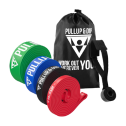
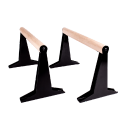
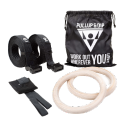

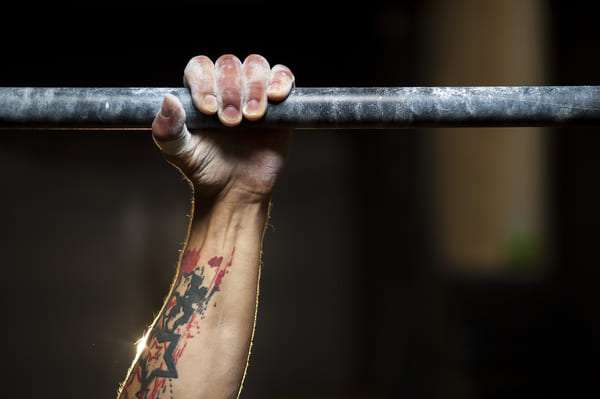
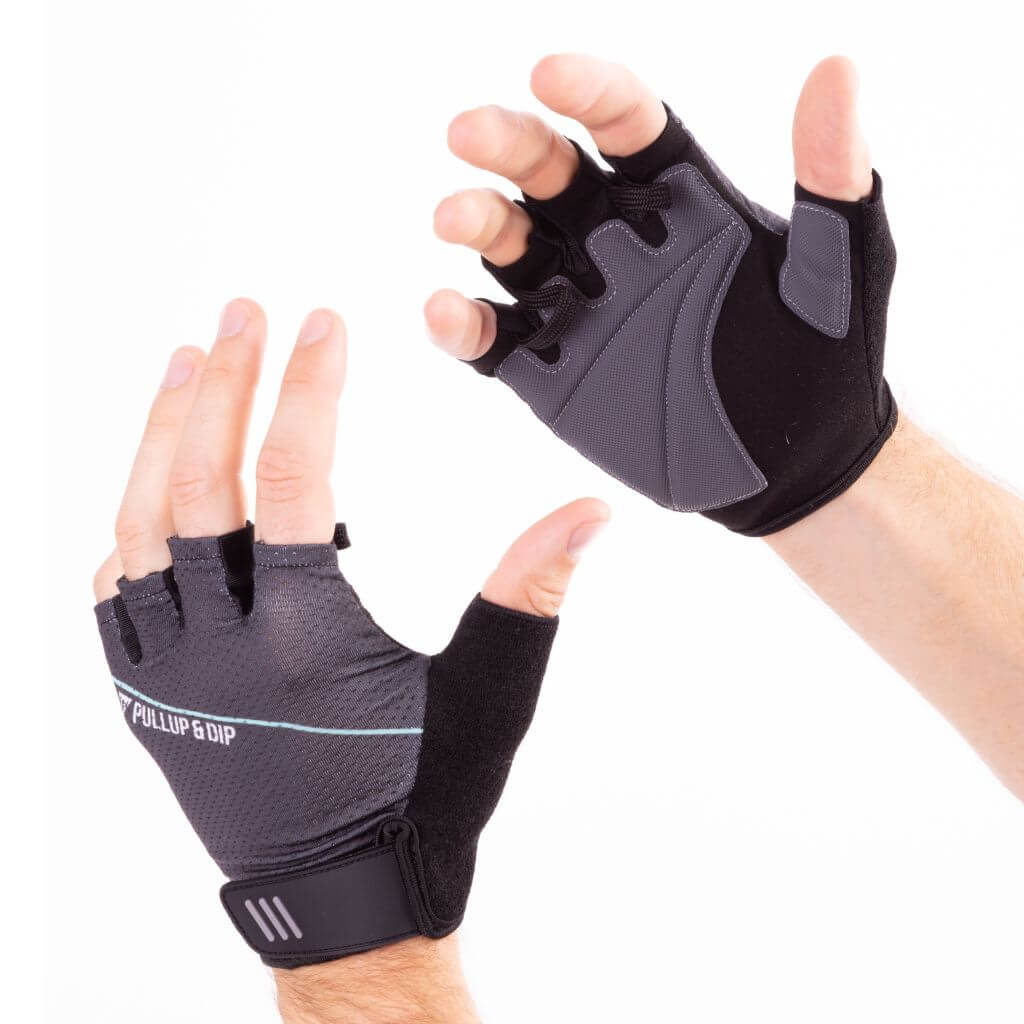
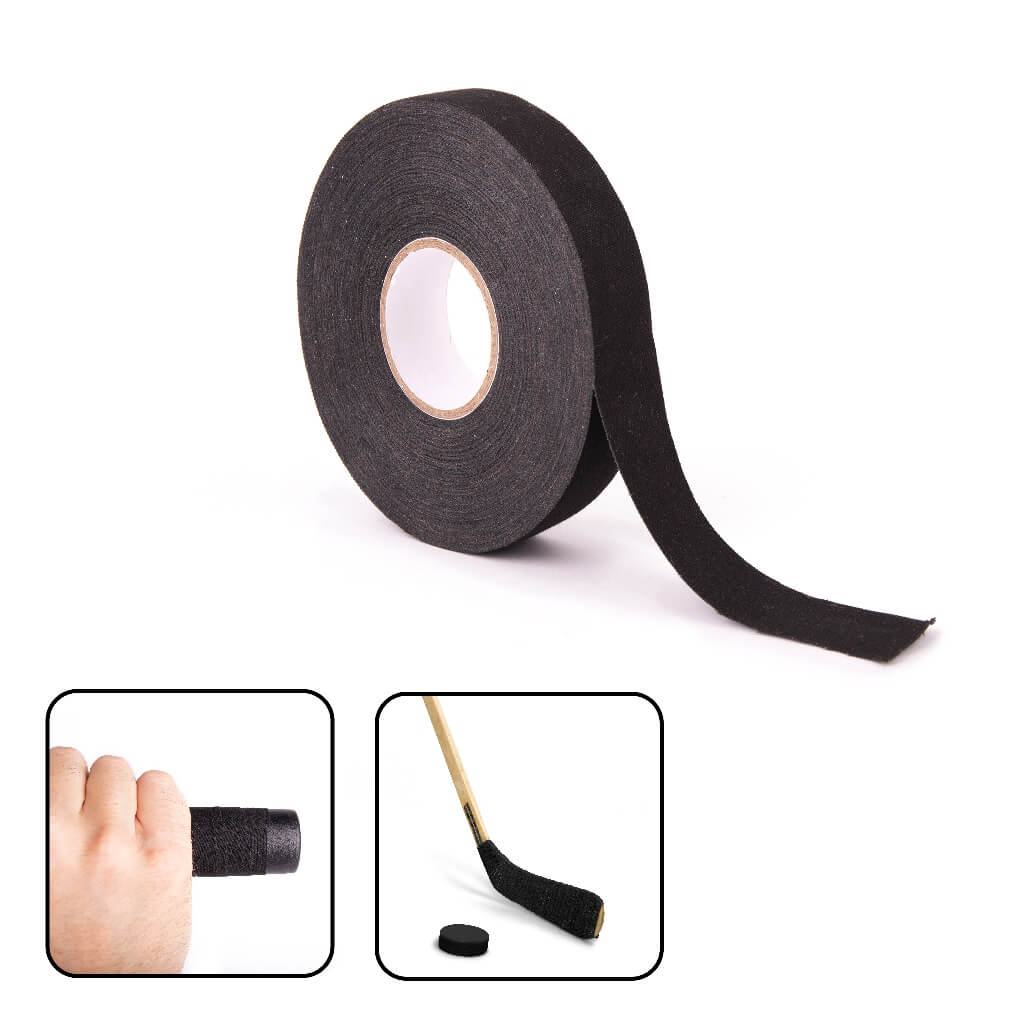
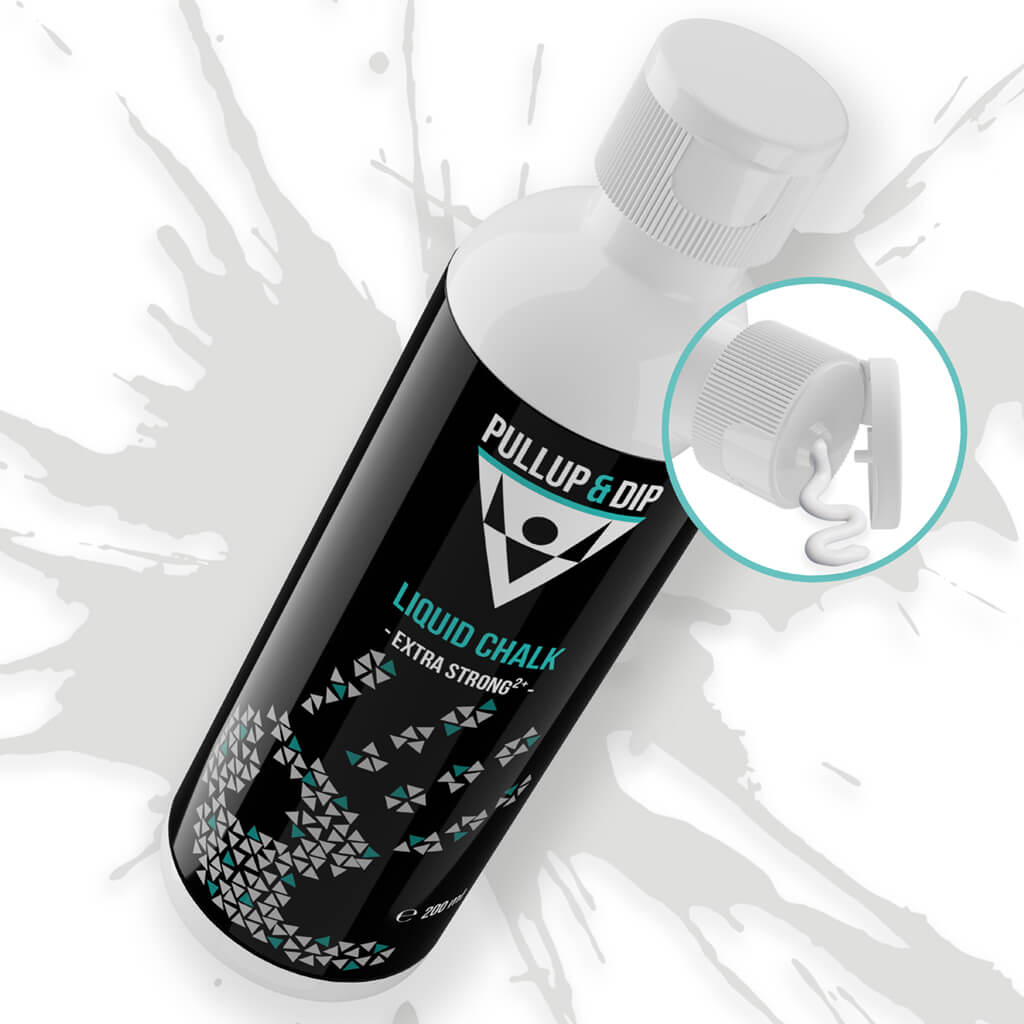
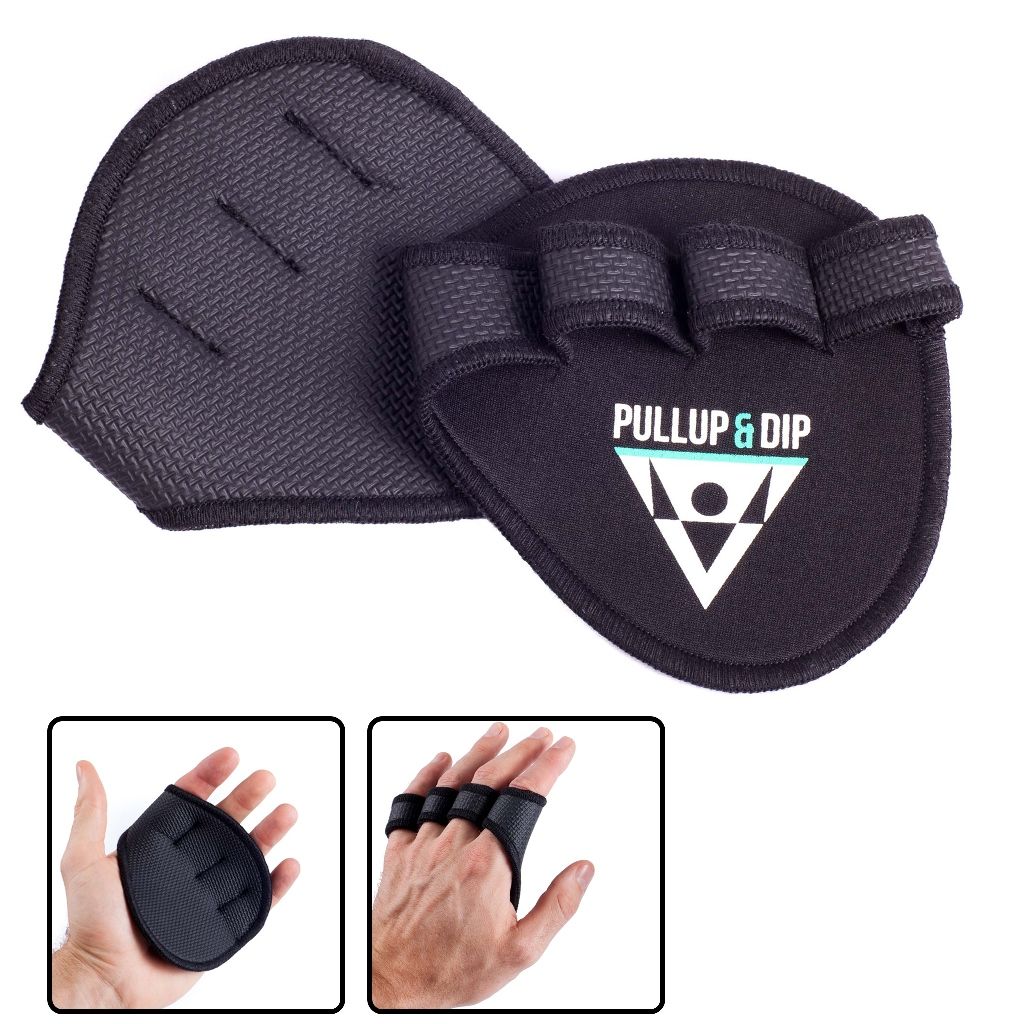
![Neoprene workout pads [set of 4] for pull-ups, fitness, strength training, 2 pairs](http://www.pullup-dip.com/cdn/shop/files/grip-pads-flach-main_1024x.jpg?v=1692187759)
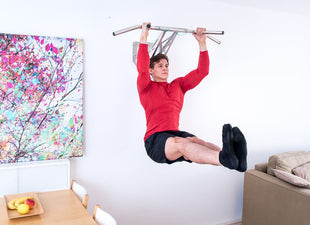
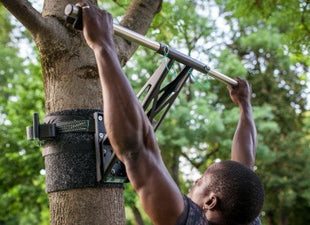
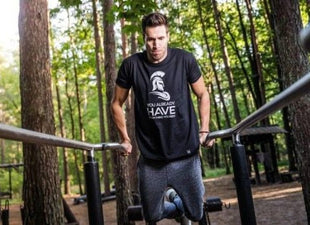
Leave a comment
All comments are moderated before being published.
This site is protected by hCaptcha and the hCaptcha Privacy Policy and Terms of Service apply.